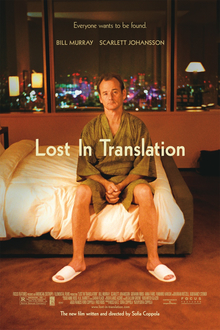
Lost in Translation Movie Poster: A Journey Through Time
Table of Contents
Introduction
Lets know about lost in translation movie poster The world of cinema is vast and multifaceted, encompassing a myriad of genres, styles, and narratives. Among the countless films that have graced the silver screen, there are those that stand out as timeless classics, leaving an indelible mark on the hearts and minds of viewers. One such film is “Lost in Translation,” a poignant tale of connection, isolation, and self-discovery set against the bustling backdrop of Tokyo. Central to the film’s allure is its evocative movie poster, which serves as a gateway to the mesmerizing world crafted by director Sofia Coppola.
The Art of Lost in Translation Movie Poster
Movie posters have long been an integral part of film marketing, serving as visual representations of the stories they promote. Beyond their practical function, posters are works of art in their own right, often embodying the essence of a film through imagery, typography, and design. From the early days of cinema to the digital age, posters have evolved alongside the medium they advertise, adapting to changing trends and technologies while retaining their power to captivate audiences.
Lost in Translation: A Cinematic Gem
Released in 2003, “Lost in Translation” captivated audiences and critics alike with its nuanced portrayal of human connection and existential longing. The film follows the unlikely bond formed between Bob Harris, an aging movie star played by Bill Murray, and Charlotte, a young college graduate portrayed by Scarlett Johansson, as they navigate the complexities of loneliness and cultural dislocation in Tokyo. Against this backdrop of urban alienation, Coppola weaves a tale of fleeting encounters and profound insights, underscored by moments of humor, melancholy, and introspection.
Deconstructing the Poster
At the heart of “Lost in Translation” lies its enigmatic movie poster, which encapsulates the film’s themes and mood with striking simplicity. Against a backdrop of neon-lit Tokyo streets, Murray and Johansson stand side by side, their expressions a mixture of curiosity and contemplation. The poster’s subdued color palette and minimalist design evoke a sense of intimacy and introspection, inviting viewers to delve into the emotional journey that awaits them.
A Journey Through Time
The lost in translation movie poster serves as a portal to a bygone era, capturing the zeitgeist of early 2000s cinema with its evocative imagery and aesthetic sensibility. From the bustling streets of Shibuya to the serene tranquility of Kyoto, the poster transports viewers to a world both familiar and foreign, where moments of connection are fleeting yet profound. In an age dominated by digital media and instant gratification, the poster serves as a tangible reminder of the power of analog storytelling, inviting viewers to immerse themselves in the cinematic experience.
Lost in Translation: Cultural Reflections
Central to the poster’s allure is its ability to bridge the gap between East and West, echoing the film’s exploration of cultural identity and cross-cultural communication. Against the backdrop of Tokyo’s vibrant metropolis, Murray and Johansson’s characters navigate a landscape of linguistic barriers and cultural differences, finding solace and connection amidst the chaos. In this sense, the poster serves as a visual metaphor for the universal longing for connection and understanding, transcending geographical and cultural boundaries to resonate with audiences around the world.
Conclusion
In conclusion, the lost in translation movie poster stands as a testament to the enduring power of cinema to inspire, provoke, and move audiences in ways both profound and profound. Through its evocative imagery and timeless themes, the poster invites viewers on a journey of self-discovery and connection, reminding us of the universal human experiences that unite us all. As we gaze upon Murray and Johansson’s characters against the backdrop of Tokyo’s neon-lit streets, we are reminded of the beauty and complexity of the human condition, and the transformative power of art to illuminate the depths of our souls.